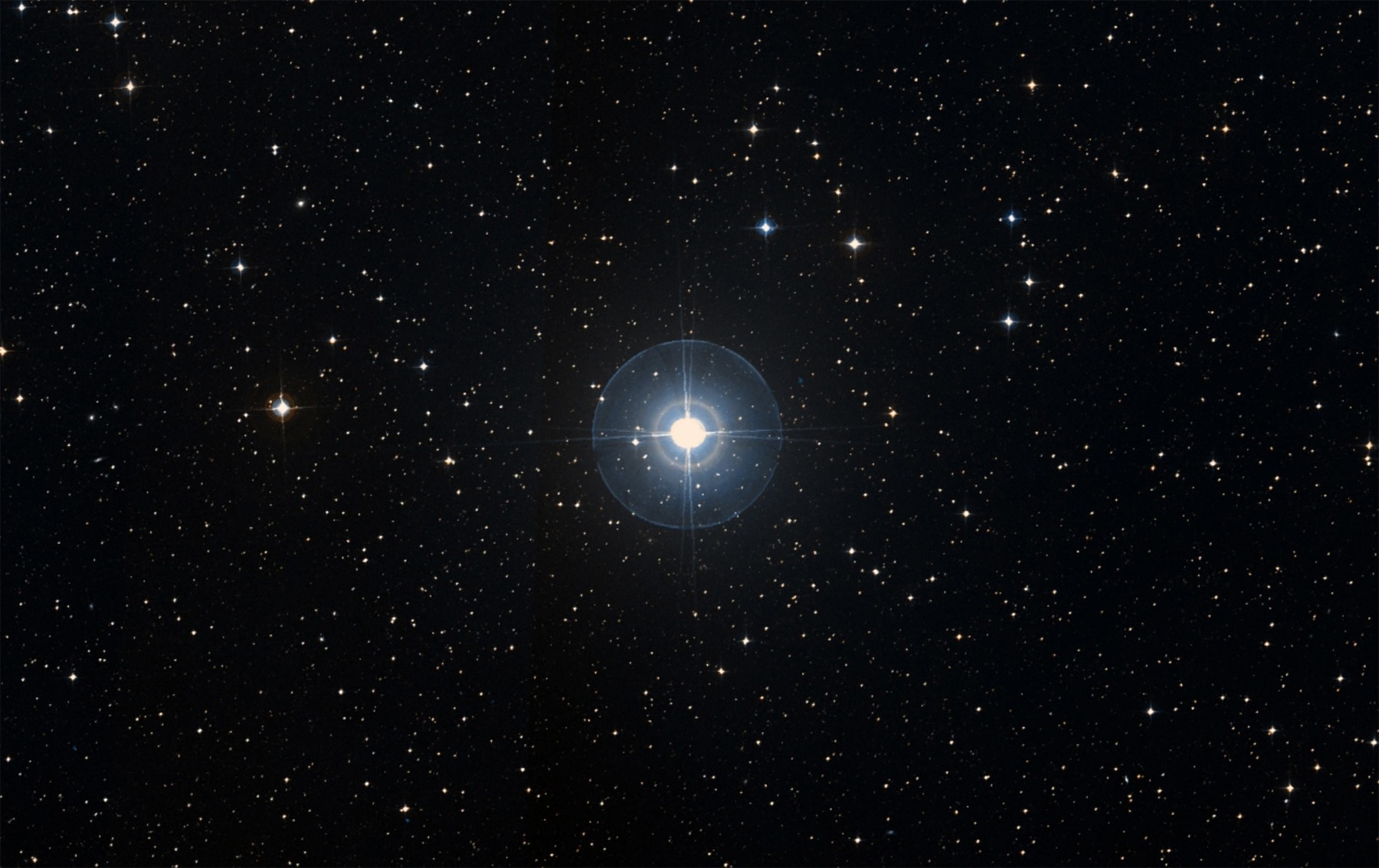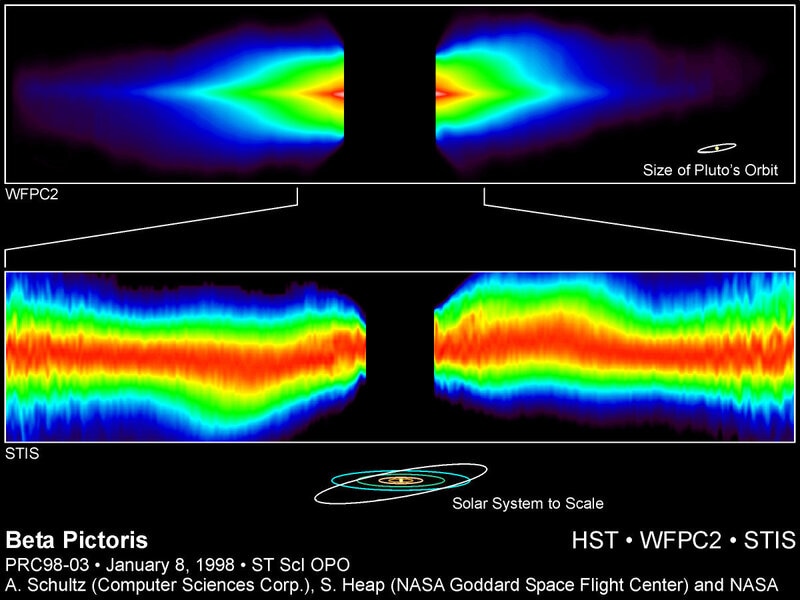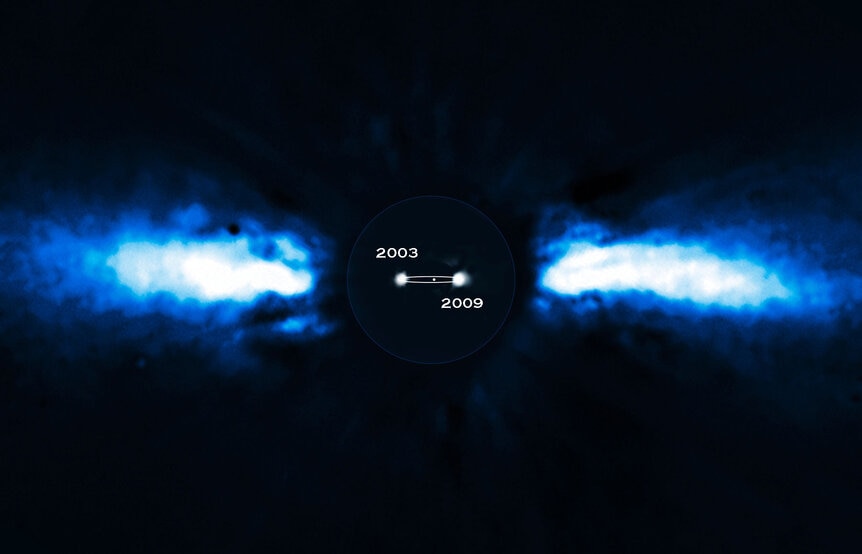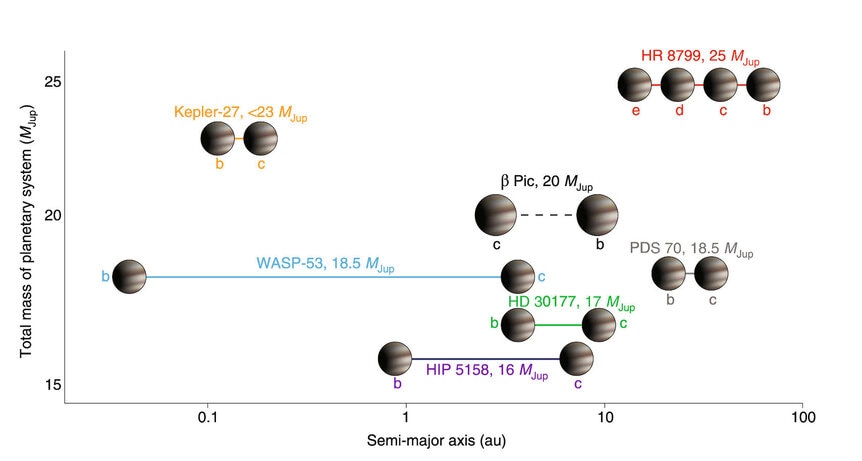Create a free profile to get unlimited access to exclusive videos, sweepstakes, and more!
A second planet for Beta Pictoris!

Beta Pictoris' family looks like it’s bigger than we thought: There's good evidence of a possible second giant planet orbiting the nearby star.
This is important and cool for a lot of reasons. To understand that, you need to take a look at the star itself.
Beta Pic (as those in the know call it) is pretty close to us, only about 65 light years away. That distance makes it easier to study than most other stars; it's bright (the 'Beta' in its name is a dead giveaway to that: It’s the second brightest star in the constellation of Pictor) and we have a better view of what's going on around it.
It's also very young. The age is estimated to be 23 million years, which makes it a baby. That too is interesting, because in the 1980s it was found to be emitting too much infrared light for a star of its age and mass. This infrared excess, as it’s called, was postulated to be due to a lot of dust around it, and sure enough detailed images showed it now only to have a disk, but that it's oriented to us very nearly edge-on, like a line going across the star. This disk is what the star formed from, and what planets form from!
This was cutting-edge observing for the time, but we keep getting better at it, and soon that disk was mapped in much greater detail, and at the inner edge (it reaches from about 7.5 to 15 billion kilometers out from the star) it was found to be warped. That could be due to the presence of a giant planet on a slightly tipped orbit, it was thought, yanking on the inner edge with its gravity.
And sure enough, in 2008 astronomers announced they had found the exoplanet! Called Beta Pic b, it orbits the star roughly 1.5 billion km out (comparable to Saturn's orbit around the Sun). My favorite part, though, is that it was discovered through direct imaging: It was physically seen in images! And over time it was also seen to move as it orbited the star. Awesome.
Not only that, there's pretty convincing evidence of exocomets (the name for comets orbiting another star) around the star, too. As they fall inward, material from the comets vaporizes, clouds up around them, and then absorbs light from the star at specific wavelengths.
So it's a complicated system, and iconic in its variety and our ability to study it. Every new discovery about it is important.
Like, say, finding a second giant planet there.
The planet is called Beta Pic c, and if the astronomers studying it are correct, it has revealed its presence through its gravity. As it orbits the star, the planet tugs on it, causing it to make a little circle as the planet makes a big one (this is called reflex motion). Seeing that motion is incredibly difficult (though not impossible; I'll explain in sec), but this motion causes a Doppler shift in its light: As the star swings toward us its light is slightly blue shifted, and when it swings away the light is redshifted.
The astronomers look at a staggering 6,645 spectra taken over 14 years (!!) to measure this periodic shift. It wasn't easy. The star itself physically pulsates, getting bigger and smaller over time, and has more complicated motions in its upper atmosphere that also interfere with measuring that Doppler shift. But so many spectra means they could really dig into them, and when they did a shift with a period of about 1,200 days popped out — the orbital period of Beta Pic c.
The best fit to their data gives a planet with a mass of 8.9 times that of Jupiter (making it a gas giant for sure) orbiting the star on an elliptical path about 400 million kilometers out. That puts it well inside the orbit of Beta Pic b, but comparable in mass (b has a mass of about 10 times Jupiter's).
This has many implications that are fun to think about. For one, this is the very first time two planets have been discovered in a system where one was found by direct imaging and the other by the reflex velocity method. For another, this makes the Beta Pic planetary system one of the most massive known; only two other known exoplanetary systems have more combined mass.
It's possible, thanks to the elliptical orbit, that at maximum distance from the star Beta Pic c might even be observable directly, though it's a tough observation to make. Even niftier, as I mentioned before, the actual motion of the star wiggling due to c's gravity is nearly impossible to detect… nearly. The authors note that it may be detectable in data from the space-based Gaia observatory when they make another big release of data in a couple of years. Over that time baseline the motion in the star may be observable. Whoa.
They note it's even possible that Beta Pic c may transit the star, passing directly in front of it when it orbits, dimming the star. That seems unlikely, in my opinion, since it would've done this several times since we started really looking at the star, and nothing's been seen. However, it's also easily possible we just missed it; it's hard to observe a star continuously enough to see every transit. They note that if the planet has largish objects sharing its orbit — what we call Trojan objects — they might transit as well. That's certainly an interesting thing to look for.
Also, there are odd gaps and knots in the disk around the star, implying there might be even more planets farther out, perhaps 3 billion km out. Clearly, we are nowhere near done finding treasures around this young star. And every time we do, we learn more about how stars are born, how planets are born, and how planetary systems are born. And that's why we keep looking.

















